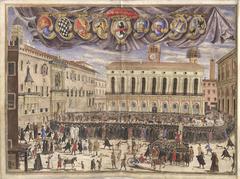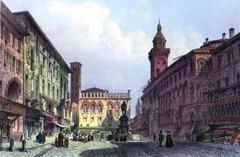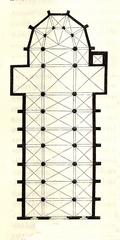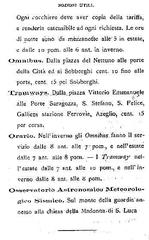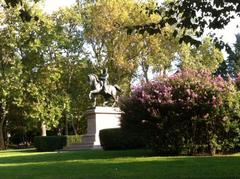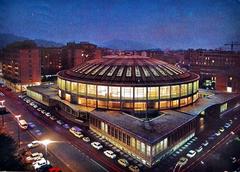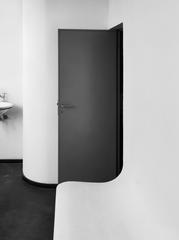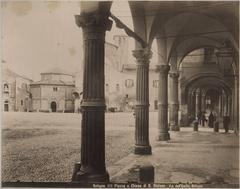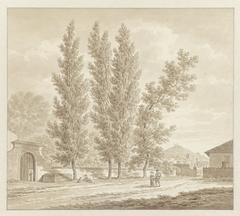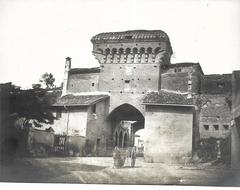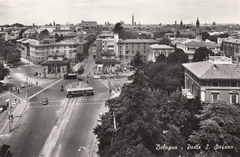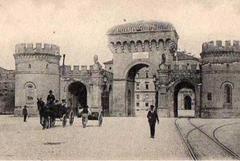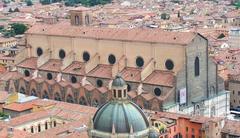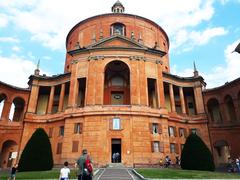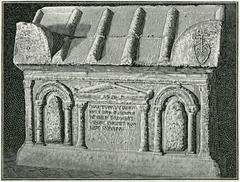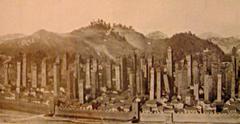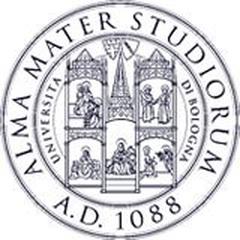
Visiting Piazza Maggiore in Bologna: Hours, Tickets, and Tips
Date: 16/07/2024
Introduction
Piazza Maggiore, located in the heart of Bologna, Italy, is a historic and vibrant square that has been central to the city’s social, political, and cultural life for centuries. Established in the 13th century, this monumental space has evolved from a medieval marketplace into a bustling hub of architectural grandeur and community events. Surrounded by iconic buildings such as the Basilica di San Petronio, Palazzo dei Notai, and the Palazzo d’Accursio, Piazza Maggiore offers visitors a unique glimpse into Bologna’s rich history and vibrant present. The square’s significance is not only architectural but also cultural, as it hosts numerous events, festivals, and public gatherings throughout the year, making it a must-visit destination for anyone exploring Bologna. Whether you’re drawn by its historical importance, architectural beauty, or lively atmosphere, Piazza Maggiore promises an engaging and enriching experience. For more information on the city’s heritage and visiting tips, consult resources such as Bologna Welcome.
Table of Contents
- Introduction
- History of Piazza Maggiore
- Visitor Information
- Travel Tips
- Unique Features
- Notable Events and Figures
- FAQ
- Conclusion
- References
History of Piazza Maggiore
Origins and Early Development
Piazza Maggiore, the central square of Bologna, Italy, has a rich history that dates back to the Middle Ages. The square’s origins can be traced to the 13th century when the city of Bologna began to expand and develop its urban infrastructure. The area that would become Piazza Maggiore was initially a marketplace and a gathering spot for the local populace. The decision to create a central square was driven by the need for a communal space that could serve both commercial and social functions.
The construction of Piazza Maggiore began in 1200, and it quickly became the heart of Bologna’s civic life. The square was designed to be a grand and open space, surrounded by important buildings that would house the city’s administrative and religious institutions. The layout of the square was influenced by the principles of medieval urban planning, which emphasized the importance of a central public space for the community.
Architectural Evolution
Over the centuries, Piazza Maggiore underwent significant architectural changes. One of the earliest and most notable buildings constructed around the square was the Palazzo del Podestà, built in 1201. This building served as the residence of the city’s chief magistrate, known as the Podestà. The Palazzo del Podestà was later expanded and renovated, reflecting the evolving architectural styles of the time.
In the 13th century, the construction of the Basilica di San Petronio began. This massive church, dedicated to Bologna’s patron saint, was intended to be one of the largest churches in the world. Although the basilica was never completed according to its original plans, it remains an iconic structure on Piazza Maggiore. The basilica’s façade, a mix of Gothic and Renaissance styles, is a testament to the architectural ambitions of medieval Bologna.
Another significant building on Piazza Maggiore is the Palazzo dei Notai, constructed in the 14th century. This building was the headquarters of the city’s notaries, who played a crucial role in the administration of justice and the recording of legal documents. The Palazzo dei Notai’s distinctive red brick façade and arched windows are characteristic of Bolognese Gothic architecture.
Renaissance and Baroque Periods
During the Renaissance, Piazza Maggiore continued to be a focal point of Bologna’s civic and cultural life. The square was the site of public events, including festivals, markets, and political gatherings. The Renaissance period also saw the construction of the Palazzo dei Banchi, which completed the eastern side of the square. This building, with its elegant portico, was designed by the architect Vignola and served as a commercial and financial center.
In the 16th century, the square was further enhanced by the addition of the Neptune Fountain, designed by the Flemish sculptor Giambologna. The fountain, with its imposing bronze statue of Neptune, became a symbol of Bologna’s power and prosperity. The Neptune Fountain remains one of the most recognizable landmarks on Piazza Maggiore.
The Baroque period brought additional changes to the square, including the construction of the Palazzo dei Banchi’s façade and the renovation of existing buildings. The square’s architectural ensemble was further enriched by the addition of decorative elements, such as statues and reliefs, which reflected the artistic trends of the time.
Modern Era and Preservation
In the 19th and 20th centuries, Piazza Maggiore underwent several restoration and preservation efforts to maintain its historical and architectural integrity. The square’s buildings were carefully restored to preserve their original features, and new construction was limited to ensure that the square’s historic character was not compromised.
During World War II, Piazza Maggiore suffered damage from bombing raids, but extensive restoration work in the post-war period helped to repair and preserve the square’s historic buildings. Today, Piazza Maggiore is a protected cultural heritage site, and ongoing preservation efforts ensure that it remains a vibrant and historically significant part of Bologna.
Visitor Information
Visiting Hours and Tickets
Piazza Maggiore is open to the public 24 hours a day, seven days a week. Entry to the square itself is free, but some of the surrounding buildings, such as the Basilica di San Petronio, may have specific visiting hours and ticket prices. It is recommended to check the official websites or local information centers for the most up-to-date details.
Best Times to Visit
The best time to visit Piazza Maggiore is during the spring and fall when the weather is pleasant, and the square is less crowded. Early mornings and late afternoons are also ideal for exploring the square and taking in its architectural beauty without the hustle and bustle of the midday crowds.
Travel Tips
How to Get There
Piazza Maggiore is located in the center of Bologna and is easily accessible by public transportation. The square is a short walk from Bologna Centrale, the city’s main train station. Several bus lines also stop near the square, making it convenient for visitors coming from different parts of the city.
Nearby Attractions
While visiting Piazza Maggiore, be sure to explore other nearby historical sites such as the Two Towers (Le Due Torri), the Archiginnasio of Bologna, and the Museum of the History of Bologna. These attractions offer a deeper insight into the rich cultural and historical heritage of the city.
Accessibility
Piazza Maggiore is accessible to visitors with disabilities. The square is flat and spacious, with ramps and pathways that accommodate wheelchairs and strollers. Many of the surrounding buildings and attractions also offer accessible entrances and facilities.
Unique Features
Piazza Maggiore is home to several unique features that make it a must-visit destination in Bologna. The square regularly hosts special events, including concerts, film screenings, and cultural festivals. Guided tours are available for those who want to learn more about the historical and architectural significance of the square. Additionally, the square’s open space and surrounding porticoes provide excellent photographic opportunities for capturing the essence of Bologna.
Notable Events and Figures
Piazza Maggiore has been the site of many notable events and has been associated with several important historical figures. In the 16th century, the square was the setting for the trial of the philosopher and scientist Giordano Bruno, who was accused of heresy by the Roman Catholic Church. Bruno’s trial and subsequent execution highlighted the tensions between scientific inquiry and religious orthodoxy during the Renaissance.
In the 19th century, Piazza Maggiore was a focal point for the Italian Risorgimento, the movement for Italian unification. The square hosted rallies and demonstrations in support of unification, and it became a symbol of the struggle for national independence and unity.
In more recent times, Piazza Maggiore has continued to be a venue for important cultural and political events. The square has hosted concerts by renowned musicians, film screenings, and public celebrations. It remains a vibrant and dynamic space that reflects the ongoing evolution of Bologna’s cultural and social life.
FAQ
Q - What are the opening hours for Piazza Maggiore?
A - Piazza Maggiore is open to the public 24 hours a day, seven days a week.
Q - Is there an entrance fee to visit Piazza Maggiore?
A - Entry to the square is free, but some surrounding buildings may have specific ticket prices.
Q - What is the best time to visit Piazza Maggiore?
A - The best time to visit is during spring and fall, or early mornings and late afternoons.
Q - How can I get to Piazza Maggiore?
A - Piazza Maggiore is easily accessible by public transportation and is a short walk from Bologna Centrale train station.
Q - Are there guided tours available?
A - Yes, guided tours are available and provide deeper insights into the square’s history and architecture.
Conclusion
Piazza Maggiore stands as a testament to the enduring importance of public spaces in urban life. From its origins as a medieval marketplace to its current status as a cultural and historical landmark, the square has played a central role in the life of Bologna. Its architectural beauty, historical significance, and vibrant cultural scene make it a must-visit destination for anyone exploring the rich heritage of Bologna. Whether you’re marveling at the Gothic grandeur of the Basilica di San Petronio, enjoying a meal at a nearby osteria, or simply soaking in the lively atmosphere, Piazza Maggiore offers a multifaceted experience that captures the essence of Bologna. For detailed visitor information and updates, visit the Bologna Welcome website or follow their social media channels.
